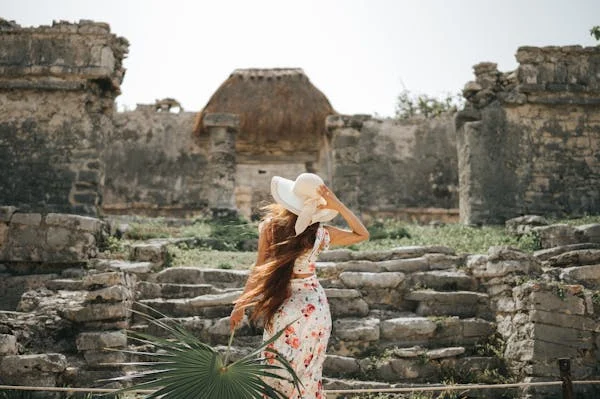Introduction
The year 1696 falls in the Baroque period, where the grandeur and drama of fashion were at their peak. Clothing was a way to express both individual taste and social class. The French court, led by King Louis XIV, was the heart of fashion in Europe during this time, and it set the standard for what was considered fashionable. What people wore in 1696 could tell you a lot about their social standing, and fashion was an important part of daily life for the rich and powerful.
The Influence of the French Court
King Louis XIV of France, also known as the Sun King, was the central figure in shaping European fashion during the late 17th century. His lavish lifestyle and the grandeur of his court in Versailles influenced fashion trends across Europe. Nobles and aristocrats from various countries looked to the French court for inspiration, adopting its styles and aesthetics to showcase their own wealth and power.
Social Status and Fashion
During this period, fashion was deeply tied to one’s social class. For the upper classes, clothing was an important way to signal their wealth, status, and alignment with the elite. People of higher social rank wore much more extravagant and expensive clothing than those from lower classes. The rich adorned themselves with luxurious fabrics, fine embroidery, and intricate accessories, ensuring that their clothing set them apart from the common folk.
Women’s Fashion in 1696
Women’s fashion in 1696 was characterized by dramatic elegance and a focus on luxurious fabrics. The key garments for women included the mantua, petticoat, and the iconic fontange headdress. These styles not only showcased wealth but also served as a status symbol.
The Mantua: An Iconic Garment
The mantua was the standout piece of women’s fashion in 1696. It was a flowing gown that opened at the front, showing off a petticoat underneath. The mantua was often made from luxurious materials such as silk and velvet and featured heavy embellishments like embroidery and lace.
Mantua Key Features:
- Full, flowing gown
- Open front with a petticoat underneath
- Wide, sweeping train
- Rich fabrics like silk and velvet
- Detailed embroidery, lace, and ribbons
The mantua was designed to be worn by the wealthy and was often worn with multiple layers to add fullness and volume. It symbolized both elegance and wealth.
The Petticoat: Adding Volume and Structure
Worn under the mantua, the petticoat was essential for creating the desired shape and volume. It helped to lift the gown and create the dramatic silhouette that was fashionable at the time. Made of silk, wool, or cotton, petticoats were often richly decorated with lace, ribbons, or embroidery.
Petticoat Features:
- Worn beneath the mantua for added volume
- Made from silk, wool, or cotton
- Embellished with lace, ribbons, and embroidery
- Essential for shaping the gown’s silhouette
The petticoat was a key component of women’s fashion in 1696, offering structure and creating the wide, dramatic shape of the mantua.
The Fontange Headdress: Heightening Elegance
One of the most distinctive features of women’s fashion in 1696 was the fontange headdress. A tall, lace headpiece, the fontange was designed to add height and sophistication. It was often decorated with lace, ribbons, and sometimes jewels, and became a symbol of nobility and high social status.
Fontange Features:
- A tall lace headpiece
- Adds height and elegance
- Worn with the mantua
- Often decorated with lace, ribbons, or jewels
The fontange was a highly elaborate accessory that completed the fashionable look of a noblewoman, showing off both wealth and status.
Fabrics and Accessories
Women’s clothing in 1696 relied on luxurious fabrics like silk, velvet, and brocade. Garments were heavily decorated with intricate embroidery and lace, and accessories such as fans, gloves, and jewelry played a key role in completing the look.
Popular Fabrics and Accessories:
- Silk, velvet, and brocade
- Intricate embroidery and lace
- Jewelry like necklaces, earrings, and brooches
- Fans, gloves, and lace handkerchiefs
These accessories were not just decorative they were an essential part of a woman’s fashionable attire and a way to further display her wealth.
Men’s Fashion in 1696
Men’s fashion in 1696 was also influenced by the Baroque style, but it was generally more restrained than women’s fashion. The key garments for men included coats, waistcoats, breeches, and cravats, which were worn to showcase refinement and sophistication.
The Coat and Waistcoat: A Fashionable Duo
The coat was an essential piece of men’s fashion in 1696. Made from luxurious fabrics like silk or wool, the coat was often richly embroidered and featured wide skirts that flared out from the waist. Underneath the coat, men wore a waistcoat, which was also made from fine fabrics and often extended to the knee.
Coat and Waistcoat Features:
- Made of silk or wool, often with embroidery
- Waistcoat extended to the knees
- Worn to convey wealth and status
The coat and waistcoat ensemble became the fashionable choice for men of the elite, showcasing both luxury and class.
Breeches and Stockings: A Polished Look
Breeches were knee-length trousers made from materials like silk or wool. They were tight-fitting and often decorated with ribbons or buckles. These were worn with stockings that reached up to the thighs, made from silk and often embroidered with intricate patterns.
Breeches and Stockings Features:
- Breeches made from silk or wool, decorated with buckles or ribbons
- Silk stockings that reached up to the thighs
- Worn to create a polished, formal look
The combination of breeches and stockings added a refined touch to men’s fashion, focusing attention on the legs and enhancing the overall silhouette.
The Cravat: A Signature Accessory
The cravat was a key accessory for men in 1696. A long piece of cloth was tied around the neck in an elaborate knot, often made from silk or linen. The style in which the cravat was tied could show a man’s status and sophistication.
Cravat Features:
- A long piece of cloth tied around the neck
- Made from silk or linen
- Tied in elaborate knots or folds
- A symbol of elegance and refinement
The cravat became a defining feature of men’s fashion in 1696, adding a sense of style and sophistication to the outfit.
Wigs and Hats: Height and Elegance
Wigs were an important part of men’s fashion, often worn long and powdered. Wigs were styled into curls or waves, with the wealthy wearing the most elaborate versions. In addition to wigs, men wore wide-brimmed hats adorned with ribbons, feathers, or jewels to complete their look.
Wig and Hat Features:
- Powdered wigs, styled in curls or waves
- Wide-brimmed hats with ribbons or feathers
- Worn to showcase sophistication and status
Wigs and hats added a sense of elegance and grandeur to men’s fashion, completing the royal and noble appearance.
Fabrics and Accessories in Men’s Fashion
Men’s clothing in 1696 featured luxurious fabrics like silk, velvet, and wool. These materials were often embellished with embroidery, lace, and ribbons. Accessories like gloves, walking sticks, and lace handkerchiefs further emphasized a man’s wealth and social status.
Key Fabrics and Accessories:
- Silk, velvet, and wool
- Embroidery and lace detailing
- Gloves, walking sticks, and lace handkerchiefs
These details helped to create a polished and sophisticated look for men during this period.
Key Features of Men’s and Women’s Fashion in 1696
| Garment | Women’s Fashion | Men’s Fashion |
| Key Garments | Mantua, Petticoat, Fontange Headdress | Coat, Waistcoat, Breeches, Cravat |
| Fabrics | Silk, Velvet, Brocade | Silk, Wool, Velvet |
| Accessories | Jewelry, Fans, Gloves, Handkerchiefs | Wigs, Hats, Gloves, Walking Sticks |
| Social Significance | Elegance, High Social Status | Wealth, Sophistication, Nobility |
This table provides a side-by-side comparison of men’s and women’s fashion in 1696, showcasing the similarities and differences in their styles.
Conclusion
Fashion in 1696 was a powerful reflection of the Baroque period, characterized by opulence, elegance, and a clear focus on social status. Both men’s and women’s clothing was designed to make a statement, with luxurious fabrics, intricate embroidery, and elaborate accessories. Women wore flowing mantuas with petticoats and fontange headdresses, while men sported ornate coats, waistcoats, and cravats, often with powdered wigs and wide-brimmed hats.
Fashion was not just about looking good it was about demonstrating one’s place in society and aligning oneself with the elite. The clothing of 1696 set the stage for future fashion trends, and the influence of this period can still be seen in modern-day clothing.
By understanding the fashion of this time, we gain a deeper insight into the culture, values, and social dynamics of the late 17th century, where every piece of clothing told a story of wealth, power, and refinement.
FAQs
What was the most popular women’s garment in 1696?
The mantua was the most popular women’s garment in 1696, featuring flowing gowns made from luxurious fabrics like silk and velvet.
How did King Louis XIV influence 1696 fashion?
King Louis XIV’s extravagant court set European fashion trends, influencing styles across the continent, especially with ornate designs.
What fabrics were commonly used in 1696 fashion?
Silk, velvet, brocade, and wool were the primary fabrics used in 1696, known for their luxurious quality and decorative embellishments.
What role did accessories play in 1696 fashion?
Accessories like jewelry, fans, gloves, and walking sticks were essential for enhancing one’s appearance and showcasing social status.
How did men’s fashion in 1696 differ from women’s fashion?
Men’s fashion focused on coats, waistcoats, and breeches, while women wore flowing gowns and elaborate headdresses for a more voluminous look.






